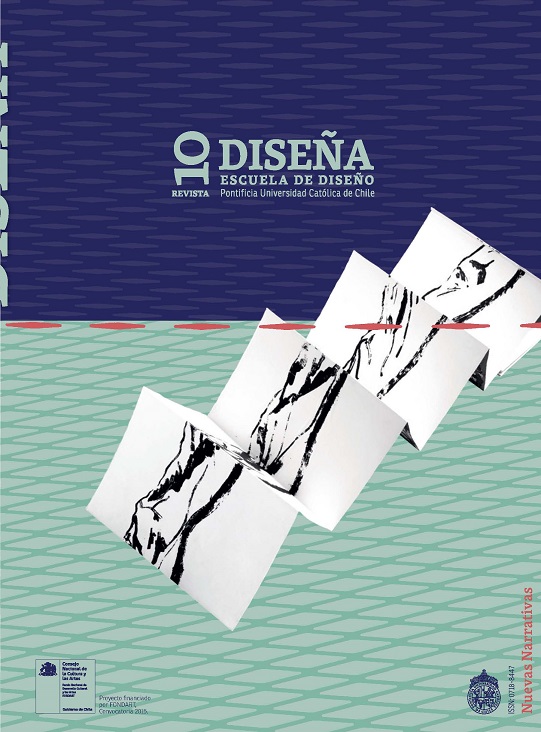Once Upon A Time, Narrative Games
Main Article Content
Abstract
Stories mark the life of the communities. The accelerated development of digital technology and its penetration into all areas generate new possibilities of narrative. From computer sciences a new variant emerges: the videogame. Its possibilities are enormous precisely because it captures the attention of users by making them part of the experience, both mentally as well as physically, implying that the design of each one of its phases and components is key in the narrative. An inquiry into its significance encompasses not only the field of design, but also critical thinking, and certainly, education.
Article Details

This work is licensed under a Creative Commons Attribution-ShareAlike 4.0 International license.
COPYRIGHT NOTICE
All contents of this electronic edition are distributed under the Creative Commons license of "Attribution-ShareAlike 4.0 Internacional" (CC-BY-SA). Any total or partial reproduction of the material must mention its origin.
The rights of the published images belong to their authors, who grant to Diseña the license for its use. The management of the permits and the authorization of the publication of the images (or of any material) that contains copyright and its consequent rights of reproduction in this publication is the sole responsibility of the authors of the articles.
References
Aristóteles. (1999). Poética (Edición trilingüe). (V. García- Yedra, Ed.) Madrid: Gredos.
Bezemer, J., & Kress, G. (2015). Multimodality, Learning and Communication: A Social Semiotic Frame. London: Routledge.
Brand, J., & Knight, S. (2005). The narrative and Ludic nexus in computer games: Diverse worlds II. Proceedings of the DiGRA Conference: Changing Views – Worlds in Play, (pp. 1-17).
Collins, K. (2008). Game sound: an introduction to the history, theory, and practice of video game music and sound design. Cambridge, MA: MIT Press.
Gee, J. P. (2003). What videogames have to teach us about learning and literacy. Nueva York: Palgrave Macmillan.
Hogan, P. C. (2013). How Authors’ Minds Stories. Cambridge: Cambridge University Press.
Manovich, L. (2001). The Language of New Media. Cambridge, MA: MIT Press.
Moulthrop, S., & Kaplan, N. (1991). Something to imagine: Literature, composition, and interactive fiction. Computers and Composition, 9(1), 7-23.
Norrington, A. (2010). Harnessing ‘e’ in storyworlds: engage, enhance, experience, entertain. Publishing Research Quarterly, 26(2), 96-105.
Plass, J. L., Homer, B. D., & Kinzer, C. K. (2015). Foundations of Game-Based Learning. Educational Psychologist, 50(4), 258-283.
Prensky, M. (2001). Digital game-based learning. Nueva York: Macgraw-Hill.
Prensky, M. (2006). “Don’t interrupt me mom, I’m learning”. St. Paul: Paragon House.
Sawhney, N., Balcom, D., & Smith, I. (1996, marzo). HyperCafe: narrative and aesthetic properties of hypervideo. Proceedings of the seventh ACM conference on Hypertext (pp. 1-10). ACM.
Stevenson, R. L. (1979). Apología de los ociosos y otras ociosidades. Barcelona: Laertes.
Verdugo, R., Nussbaum, M., Corro, P., Núñez, P., & Navarrete, P. (2011). Interactive films and coconstruction. ACM Transactions on Multimedia Computing, Communications, and Applications (TOMM), 7(4), 39.
Wreden, D., & Galactic Café. (2011). The Stanley Parable. [Multiple Platform]. Galactic Café.
Young, M. F., Slota, S. T., Travis, R., & Choi, B. (2015). Game Narrative, Interactive Fiction, and Storytelling: Creating a “Time for Telling” in the Classroom. En G. P. Green, & J. C. Kaufman, Video Games and Creativity (Vol. 199), pp. 199-222. Amsterdam: Academic Press.

